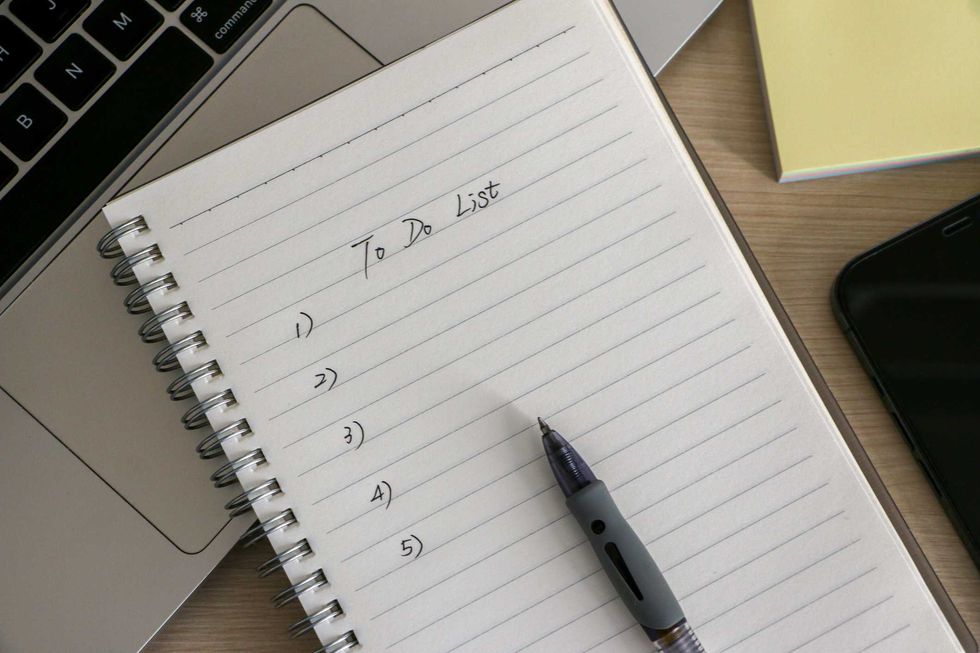Modern workdays are rarely smooth and uninterrupted. Between meetings, endless Slack notifications and the occasional slump in energy, finding long stretches of focused time can feel impossible.
Enter microshifting, a fresh approach that’s all about making the most of the small moments.
Instead of waiting for the perfect block of time to be productive, microshifting encourages workers to tackle tasks in short bursts, whenever and wherever possible.
Speaking about the shift, Peter Duris, CEO and co-founder of Kickresume, explains that the workplace is no longer as rigid or structured as it once was.
When it comes to job perks, flexibility still comes out on top for most applicants – whether that be a remote work set-up or the ability to work flexible hours.
"Microshifting is a great way for employees to balance their personal responsibilities alongside work," he shares. "If you have the option to work microshifts, it could be worth discussing with your manager. This may be especially game-changing for parents or carers."
What is microshifting?
Microshifting is an increasingly popular way of working, especially among Gen Z, working parents, and those with caring responsibilities.
It’s all about moving away from the traditional 9 to 5 and working in short, flexible bursts that fit around your day (and your energy levels).
You might start early, take a lengthy break around midday, then log back on later in the evening – whatever fits your schedule and mindset, as long as the work gets done.
This way of working has been common for years in industries like retail and hospitality, but it’s now gaining ground in office-based roles too. With more people seeking greater balance, some workplaces are beginning to adapt.
As long as tasks aren’t time-sensitive and deadlines are met, many employers are realising that flexibility can work both ways, boosting productivity without compromising on output.

How to approach microshifting at work
Not every company is ready to embrace microshifting just yet. But Duris stresses that it all begins with open communication.
"Be clear and transparent," Duris advises. Let your manager and team know when you’ll be available so everyone can plan around your schedule. Using a shared calendar to log your working hours and breaks can help keep things running smoothly.
Duris also recommends focusing on your most important tasks during your peak energy times. "Complete your high-priority tasks during your most productive hours," he explains. Whether you’re a morning person or find your flow later in the day, working with your natural rhythm can boost your effectiveness.
Because microshifting means working in short, flexible blocks, staying organised is key.
"It may be helpful to use a digital scheduling tool to manage your working blocks and personal responsibilities," Duris says. This is especially important if you juggle multiple jobs or roles – it’ll help you avoid double-booking and keep everything on track.

Tips for managers
Duris suggests offering your employees flexible options. "One of the benefits of microshifting is that it allows employees to work when they’re most productive," he says. Giving people the freedom to choose their working hours can boost job satisfaction and even improve the quality of work across your team.
Setting clear expectations is also key.
"When employees work outside of typical hours, it’s important to schedule core working hours for the whole team," Duris explains. This ensures there’s dedicated time for meetings and collaboration, keeping everyone connected.
Regular check-ins are crucial, too. Duris warns that microshifting’s flexibility can sometimes lead to overworking.
"Make sure to check in with your team regularly to see how they’re managing their workload and personal responsibilities," he advises. This helps prevent burnout and supports a healthy work-life balance.
You should also read...
- ‘Tinder leave’ is now a thing – and yes, it gets you out of work to date
- You could be 'task masking' at work without realising - and it's more worrying than just laziness
Sign up to our free Indy100 weekly newsletter
How to join the indy100's free WhatsApp channel
Have your say in our news democracy. Click the upvote icon at the top of the page to help raise this article through the indy100 rankings.














